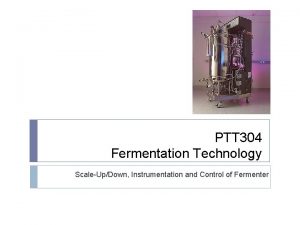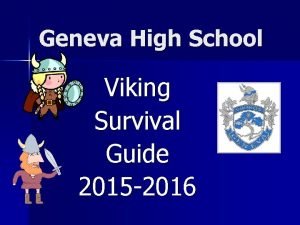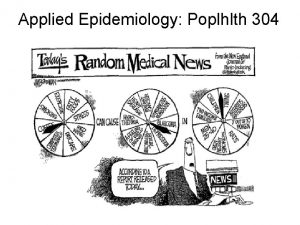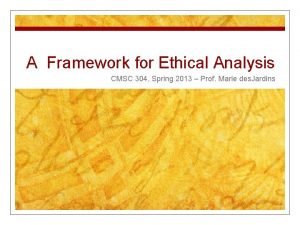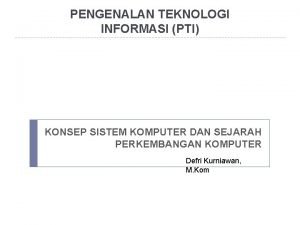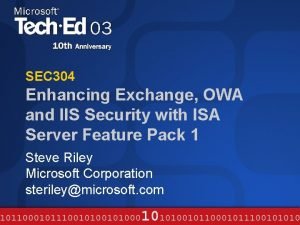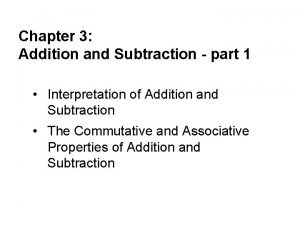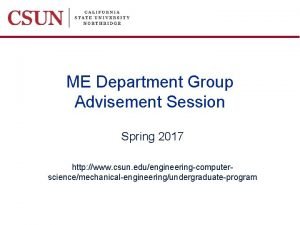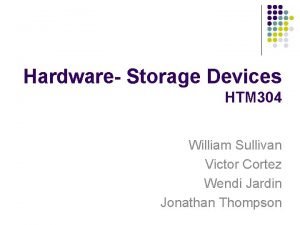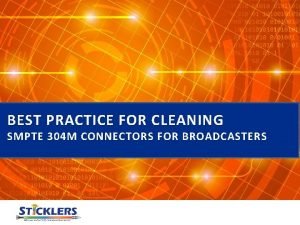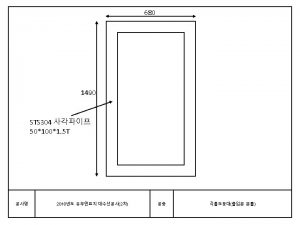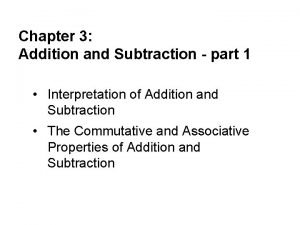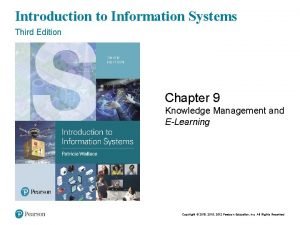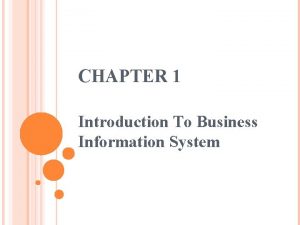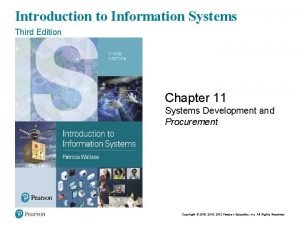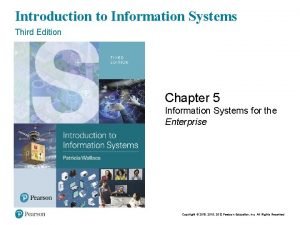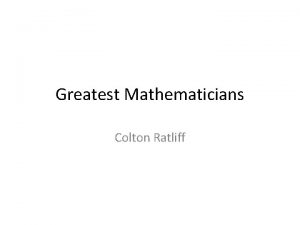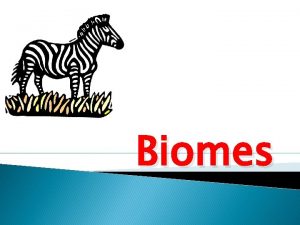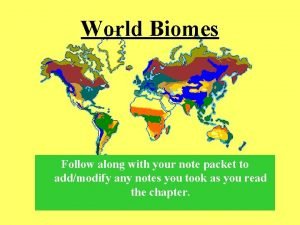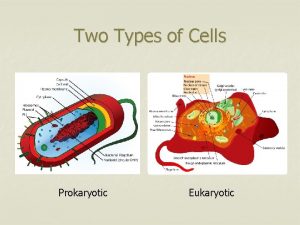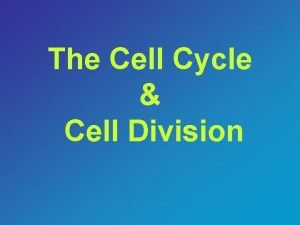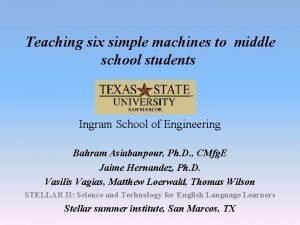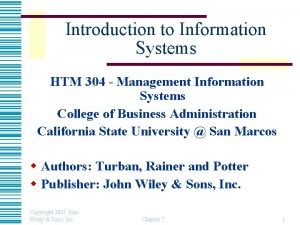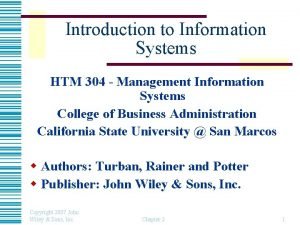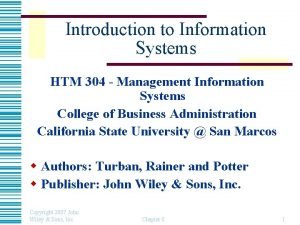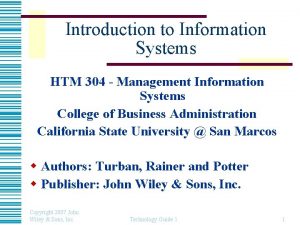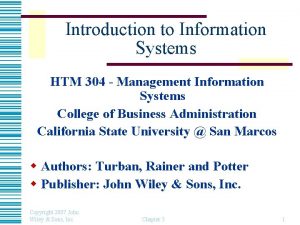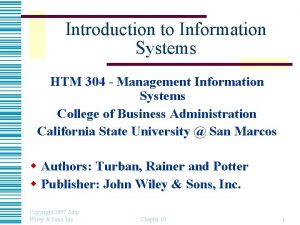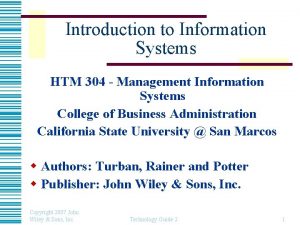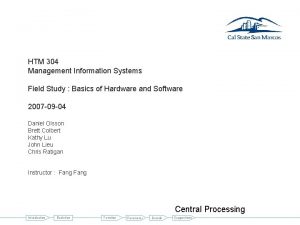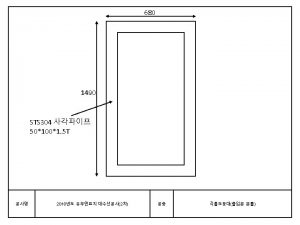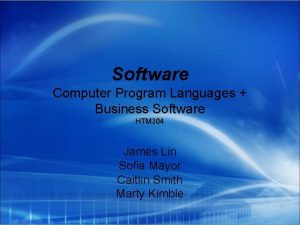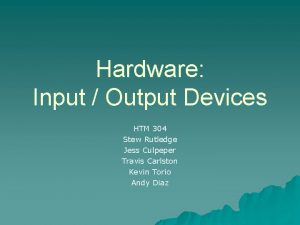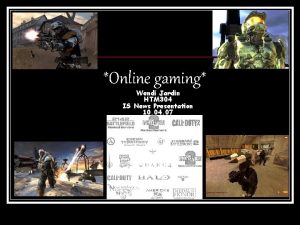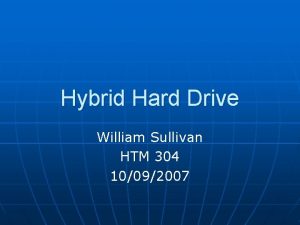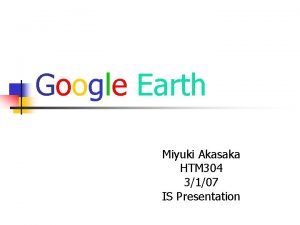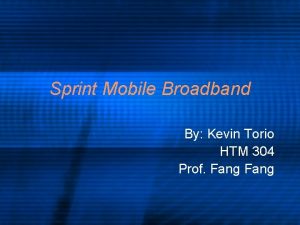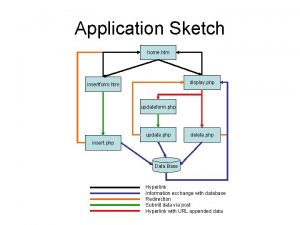Introduction to Information Systems HTM 304 Management Information
































- Slides: 32

Introduction to Information Systems HTM 304 - Management Information Systems College of Business Administration California State University @ San Marcos w Authors: Turban, Rainer and Potter w Publisher: John Wiley & Sons, Inc. Copyright 2007 John Wiley & Sons, Inc. Chapter 6 1

Chapter 6 E-Business and E-Commerce Copyright 2007 John Wiley & Sons, Inc. Chapter 6 2

Chapter Outline w 6. 1 Overview of E-Business & E-Commerce w 6. 2 Business-to-Consumer (B 2 C) ECommerce w 6. 3 Business-to-Business (B 2 B) E-Commerce w 6. 4 Electronic Payments w 6. 5 Ethical and Legal Issues in E-Business Copyright 2007 John Wiley & Sons, Inc. Chapter 6 3

Learning Objectives w Describe electronic commerce, including its scope, benefits, and limitations. w Distinguish between pure and partial electronic commerce. w Understand the basics of how online auctions work. Copyright 2007 John Wiley & Sons, Inc. Chapter 6 4

Learning Objectives (Continued) w Differentiate among business-to-consumer, business-to-business, consumer-to-consumer, business-to-employee and government-tocitizen electronic commerce. w Describe the major e-commerce support services, specifically payments and logistics. w Discuss some ethical and legal issues relating to e-commerce. Copyright 2007 John Wiley & Sons, Inc. Chapter 6 5

6. 1 Overview w Electronic commerce (e-commerce, EC) describes the buying, selling, transferring or exchanging of products, services or information via computer networks, including the Internet. w E-business is a broader definition of EC, including buying and selling of goods and services, and also servicing customers, collaborating with partners, conducting e-learning and conducting electronic transactions within an organization. Copyright 2007 John Wiley & Sons, Inc. Chapter 6 6

Overview (Continued) w Pure vs. Partial EC depends on the degree of digitization involved. n n n The product can be physical or digital; The process can be physical or digital; The delivery agent can be physical or digital. w Brick-and-mortar organizations are purely physical organizations. Copyright 2007 John Wiley & Sons, Inc. Chapter 6 7

Overview (Continued) w Virtual organizations are companies that are engaged only in EC. i. e. pure EC w Click-and-mortar organizations are those that conduct some e-commerce activities, yet their business is primarily done in the physical world. i. e. partial EC Copyright 2007 John Wiley & Sons, Inc. Chapter 6 8

Types of E-Commerce w Business-to-consumers (B 2 C) w Business-to-business (B 2 B) w Consumer-to-consumer (C 2 C) w Business-to-employee (B 2 E) w E-government Copyright 2007 John Wiley & Sons, Inc. Chapter 6 9

Types of EC (Continued) w Mobile Commerce (m-commerce) refers to e-commerce that is conducted in a wireless environment. i. e. using cell phone to shop over the Internet w Business model is the method by which a company generates revenue to sustain itself. Copyright 2007 John Wiley & Sons, Inc. Chapter 6 10

Major E-Commerce Mechanisms w Auction is a competitive process in which either a seller solicits bids from buyers or a buyer solicits bids from sellers. w Forward auctions are auctions that sellers use as a channel to many potential buyers. w Reverse auctions one buyer, usually an organization, wants to buy a product or service. Copyright 2007 John Wiley & Sons, Inc. Chapter 6 11

Major E-Commerce Mechanisms (Continued) w Electronic storefront is a Web site on the internet representing a single store. w Electronic mall (cybermall, e-mall) is a collection of individual shops under one Internet address. w Electronic marketplace (e-marketplace) is a central, virtual market space on the Web where many buyers and many sellers can conduct electronic commerce and electronic business activities. Copyright 2007 John Wiley & Sons, Inc. Chapter 6 12

Benefits and Limitations of E-Commerce w Benefits to organizations n n Makes national and international markets more accessible Lowering costs of processing, distributing, and retrieving information w Benefits to customers n Access a vast number of products and services around the clock – 24/7 Copyright 2007 John Wiley & Sons, Inc. Chapter 6 13

Benefits and Limitations of E-Commerce (Continued) w Benefits to Society n Ability to easily and conveniently deliver information, services and products to people in cities, rural areas and developing countries. Copyright 2007 John Wiley & Sons, Inc. Chapter 6 14

Benefits and Limitations of E-Commerce (Continued) w Technological Limitations n n n Lack of universally accepted security standards Insufficient telecommunications bandwidth Expensive accessibility w Nontechnological Limitations n n n Perception that EC is unsecure Unresolved legal issues Lacks a critical mass of sellers and buyers Copyright 2007 John Wiley & Sons, Inc. Chapter 6 15

6. 2 B 2 C Electronic Commerce w Electronic Storefront has its own URL at which buyers can place orders. w Electronic Malls (Cybermall or e-mall) is a collection of individual shops under one Internet address. n n Referral malls in which you are transferred to a participating storefront Electronic shopping cart enables you to gather items from various vendors and pay for them in one transaction. Copyright 2007 John Wiley & Sons, Inc. Chapter 6 16

Online Service Industries w Cyberbanking (electronic banking) conducting various banking activities outside of a physical banking location. w Online Securities Trading uses computers to trade stocks, bonds and other financial instruments. w Online Job Market advertises available positions, accept resumes and takes applications via the Internet. Copyright 2007 John Wiley & Sons, Inc. Chapter 6 17

Online Service Industries (Continued) w Travel Services plan, explore and arrange almost any trip economically over the Internet. w Real Estate view, sort and organize properties according to your preferences and decision criteria. w Really Simple Syndication (RSS) information that you request, called a feed, comes to you daily through a piece of software called a newsreader. Copyright 2007 John Wiley & Sons, Inc. Chapter 6 18

Issues in E-tailing w Channel conflict with regular distributors is faced by click-and-mortar companies when they sell directly to customers online. n Multichanneling is a process that integrates a companies online and offline channels. w Order fulfillment includes not only providing customers with what they ordered and doing it on time, but also providing all related customer service. Copyright 2007 John Wiley & Sons, Inc. Chapter 6 19

Online Advertising w Advertising is an attempt to disseminate information in order to influence a buyer-seller transaction. w Advertising methods n n n Banners are simply electronic billboards. Pop-up ad appears in front of the current browser window. Pop-under ad appears underneath the active window. Copyright 2007 John Wiley & Sons, Inc. Chapter 6 20

Online Advertising (Continued) w E-mail is when Marketers develop or purchase a list of e-mail addresses and send advertisements via e-mail. w Spamming is the indiscriminate distribution of electronic ads without the permission of the receiver. Copyright 2007 John Wiley & Sons, Inc. Chapter 6 21

Online Advertising (Continued) w Permission marketing asks consumers to give their permission to voluntarily accept online advertising and e-mail. w Viral marketing refers to online “word-of-mouth” marketing. Copyright 2007 John Wiley & Sons, Inc. Chapter 6 22

6. 3 B 2 B Electronic Commerce w Sell-side marketplaces are where organizations attempt to sell their products or services to other organizations electronically from their own private e-marketplace. w Buy-side marketplaces are where organizations attempt to buy needed products or services from other organizations electronically. Copyright 2007 John Wiley & Sons, Inc. Chapter 6 23

B 2 B Electronic Commerce (Continued) w E-Procurement is using electronic support to purchase goods and materials, sourcing, negotiating with suppliers, paying for goods and making delivery arrangements. n Group purchasing is when the orders of many buyers are combined so that they constitute a large volume. Copyright 2007 John Wiley & Sons, Inc. Chapter 6 24

Electronic Exchanges w Many buyers and sellers; open to all business organizations; exchanges are for both indirect materials and direct materials. w Vertical exchanges connects buyers and sellers in a given industry. w Horizontal exchanges connect buyers and sellers across many industries and are used mainly for MRO materials. Copyright 2007 John Wiley & Sons, Inc. Chapter 6 25

Electronic Exchanges (Continued) w Functional exchanges are where needed services such as temporary help or extra office space are traded on an “as-needed” basis. w Electronic hubs are used to facilitate communications and coordination among business partners, frequently along the supply chain. Copyright 2007 John Wiley & Sons, Inc. Chapter 6 26

6. 4 Electronic Payments w Electronic payment systems enable you to pay for goods and services electronically. w Electronic checks (e-checks) are similar to paper checks and are used mostly in B 2 B. w Electronic credit cards allow customers to charge online payments to their credit card account. Copyright 2007 John Wiley & Sons, Inc. Chapter 6 27

Electronic Payments (Continued) w Purchasing cards are the B 2 B equivalent of electronic credit cards and are typically used for unplanned B 2 B purchases. w Electronic cash n n Stored-value money cards allow you to store a fixed amount of prepaid money and then spend it as necessary. Smart cards contain a chip called a microprocessor that can store a considerable amount of information and are multipurpose – can be used as a debit card, credit card or a stored-value money card. Copyright 2007 John Wiley & Sons, Inc. Chapter 6 28

Electronic Payments (Continued) w Person-to-person payments are a form of ecash that enables two individuals or an individual and a business to transfer funds without using a credit card. Copyright 2007 John Wiley & Sons, Inc. Chapter 6 29

6. 5 Ethical and Legal Issues w Ethical Issues w Privacy n n Stored and transferred personal information Tracking (i. e. cookies) Ethical Issues w Disintermediation n n Value-added services that require expertise Job loss Copyright 2007 John Wiley & Sons, Inc. Chapter 6 30

Legal Issues Specific to Ecommerce w Fraud on the Internet i. e. stocks, investments, business opportunities, auctions. w Domain Names problems with competition. w Cybersquatting refers to the practice of registering domain names solely for the purpose of selling them later at a higher price. Copyright 2007 John Wiley & Sons, Inc. Chapter 6 31

Legal Issues Specific to Ecommerce (Continued) w Taxes and other Fees when and where (and in some cases whether) electronic sellers should pay business license taxes, franchise fees, gross-receipts taxes, excise taxes, …etc. w Copyright protecting intellectual property in e-commerce and enforcing copyright laws is extremely difficult. Copyright 2007 John Wiley & Sons, Inc. Chapter 6 32
 North south east west globe
North south east west globe Introduction to information systems 5th edition
Introduction to information systems 5th edition Ptt304
Ptt304 Hac geneva 304
Hac geneva 304 Poplhlth 304
Poplhlth 304 Cmsc 304 umbc
Cmsc 304 umbc Ncr serie 304
Ncr serie 304 Iis 304
Iis 304 Poplhlth 304
Poplhlth 304 Matteo is 4 feet 3 inches tall
Matteo is 4 feet 3 inches tall Mse 227 csun
Mse 227 csun Memorex 304
Memorex 304 Crs 19-3-304
Crs 19-3-304 Premier poc03m
Premier poc03m Sts 304
Sts 304 Matteo is 4 feet 3 inches tall
Matteo is 4 feet 3 inches tall Introduction to information systems 6th edition
Introduction to information systems 6th edition Fundamentals of information systems chapter 1
Fundamentals of information systems chapter 1 Introduction to information systems 3rd edition
Introduction to information systems 3rd edition Components of information systems
Components of information systems Introduction to accounting information systems
Introduction to accounting information systems Introduction to information systems 3rd edition
Introduction to information systems 3rd edition Introduction to information systems 3rd edition
Introduction to information systems 3rd edition Buchinghamshire
Buchinghamshire Isaac newton nationality
Isaac newton nationality Switchzoo.com/games/build a biome.htm
Switchzoo.com/games/build a biome.htm Http://www.blueplanetbiomes.org/world_biomes.htm
Http://www.blueplanetbiomes.org/world_biomes.htm Usps
Usps Http://www.cellsalive.com/howbig.htm
Http://www.cellsalive.com/howbig.htm Http://www.cellsalive.com/mitosis.htm
Http://www.cellsalive.com/mitosis.htm Masacre de boston
Masacre de boston Sample of inclined plane
Sample of inclined plane Mmpi2.htm
Mmpi2.htm


